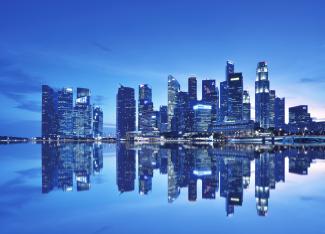
Founded in 1885, Johnson & Johnson (J&J) is a consortium of companies with around 250 subsidiary companies operating in 60 countries, and products sold in over 175 countries. The company operates three major product divisions globally - Consumer Health Products, Medical Devices and Pharmaceutical products. It derives its revenue from four regions: US, Europe, the Western Hemisphere (excluding the US), and APAC/Africa.
In 2018, J&J relocated its regional headquarters (RHQ) for APAC to Singapore. As a global city with extensive international connections, Singapore was ideal as a command and control centre for multinational corporations (MNCs) looking to expand regionally in APAC. Its competitive advantages included its geographic location, political stability, innovation ecosystem and ease of doing business. Other plus points included a strong legal system, well-qualified bilingual workforce, and a robust supporting infrastructure of banking and logistics services. J&J’s leadership team, and some of the primary functions for APAC, such as supply chain, treasury, quality, marketing, human resources, finance and accounting and enterprise engineering services, were managed from the Singapore office, while other initiatives such as sales, were handled locally for each country.
However, there are concerns whether Singapore can sustain its advantages as an RHQ destination in the future, given its limited workforce, high cost of living, high operational costs and limited land supply. Its distance from China, India and Japan, which are major markets for J&J, is also a constraint. Over the years, many countries in Asia have made accelerated improvements in building infrastructure facilities and harnessing talent. In addition, cities like Shanghai, Hong Kong and Tokyo have become increasingly attractive to MNCs as RHQ locations due to their proximity to large markets in the region.
Can Singapore’s innovation-ecosystem continue to suffice as a sustained differentiating factor in attracting large MNCs to set up RHQs in the country in the coming years? The case is written by Professor Arnoud De Meyer, University Professor, SMU Lee Kong Chian School of Business and Lipika Bhattacharya of The Centre for Management Practice (CMP).
Read the full case to understand key considerations of setting up RHQs and the significance of innovation ecosystems in context.